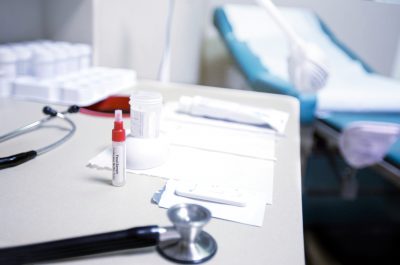
It’s that dreaded time of the year when you are forced to make your annual visit to the gynaecologist or GP for “that” check-up. The visit dominates your thoughts days in advance as you’re not sure what to expect – the last visit was a blur of nerves and now it’s time to go again! Dr Elna Rudolph, medical doctor, sexologist and Femagene sexual health expert says that being informed about the process, and understanding what to expect removes most of the uncertainty and anxiousness from this annual check-up.
“The word pap smear* often strikes fear into women’s hearts, but it’s a totally routine practice and something that shouldn’t cause anxiety,” says Dr Elna. She offers some insight into what to expect from your annual pap smear:
- To start, you don’t necessarily have to do anything to prepare for a pap smear.
- When you arrive at the doctor’s rooms, ask the receptionist if the doctor would like a urine sample. Having a pap smear on a full bladder is uncomfortable.
- It is not ideal to schedule a pap smear while you are menstruating. If you start to bleed in the days prior to the visit, postpone or reschedule.
- Take a list of any concerns or questions you might have. Once you’re sitting in the office its normal to forget any ailments you want to discuss. Remember to mention any abnormal or irregular bleeding and mention any strange symptoms you might be having.
- Once in the examination room, you can remove your clothing including your underwear, and put the gown on the right way – not the way it is often worn in hospitals.
- When the doctor returns, he or she will begin with a quick breast exam to check for lumps or irregularities.
- Next up is a quick external examination of the stomach.

- The doctor will ask you to bend your knees and place your feet just a bit wider than shoulder width apart. Some practices still use stirrups and if so, you will be asked to place your legs in the stirrups for the examination. The doctor will lubricate the speculum – the device used to gather the sample from your cervix. Once inserted it might be slightly uncomfortable. Try your best to relax – the process is quick. You can check beforehand if the doctor uses disposable speculums. It is not advised to use the old steel speculums anymore since they are very difficult to sterilise and infection can be transmitted between patients.
- Once the sample has been collected, the device will be removed. The doctor will then perform a bimanual exam where he/she will check for sensitivity of your cervix as well as the size of your uterus and ovaries. If indicated an ultrasound will be performed next, but in most cases this is not necessary. After this, the doctor will offer you a few tissues to remove any lubrication, and you are then free to get dressed.
- Ensure that you get your results back from the doctor. The no-news-is-good-news policy is very dangerous. Occasionally samples go missing or doctors don’t see the reports and then an abnormal result might be missed.
Dr Elna says that women between the ages of 21 and 29 should get a pap smear at least every two years. Women between 30 and 65 should get a pap smear plus an HPV test preferably every five years, or a pap smear alone every three years as an alternative. “If a woman has ever had an abnormal pap smear, she will need to have a pap smear annually and if you have any concerns like bleeding after sex, don’t wait, rather see the doctor as soon as possible.”




